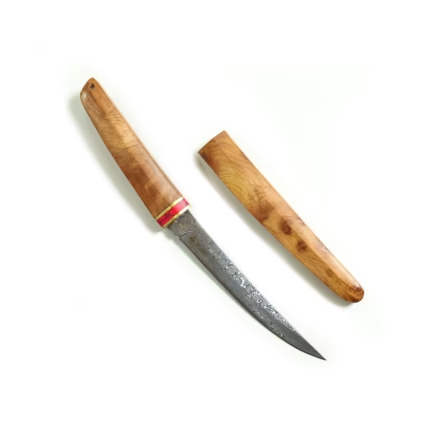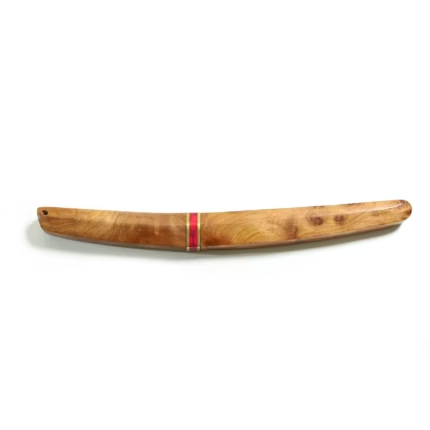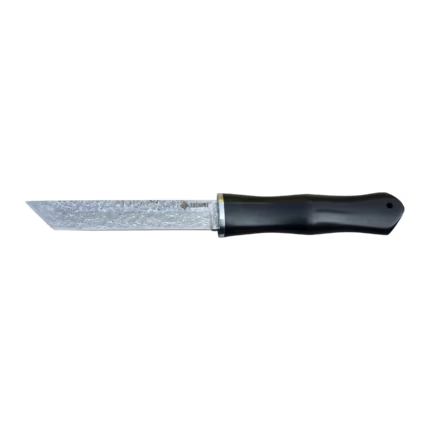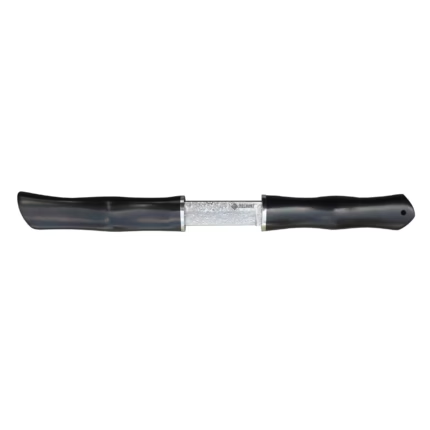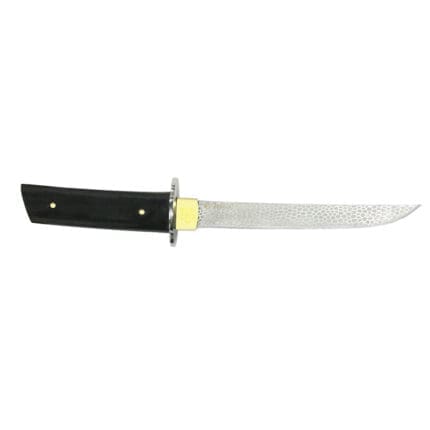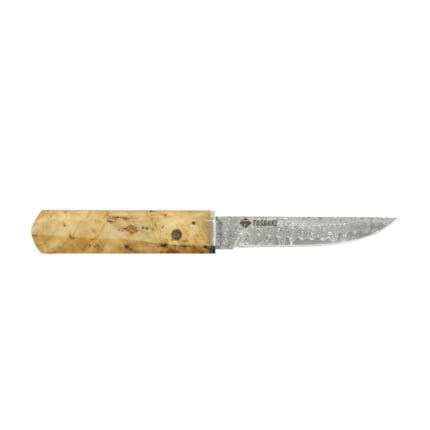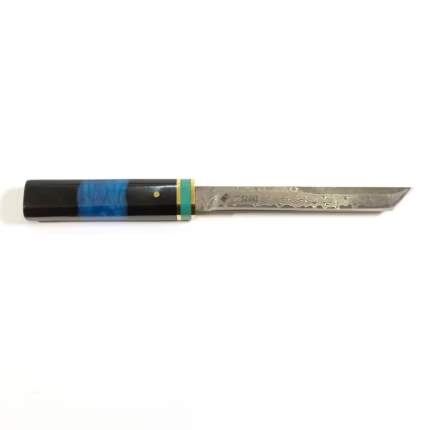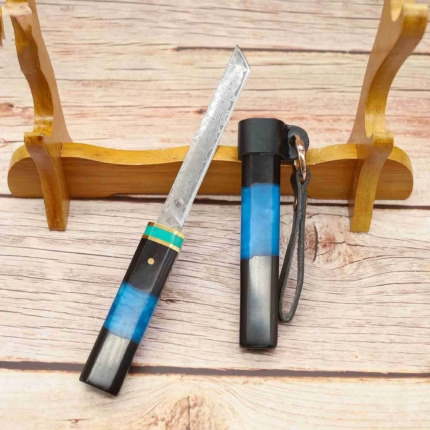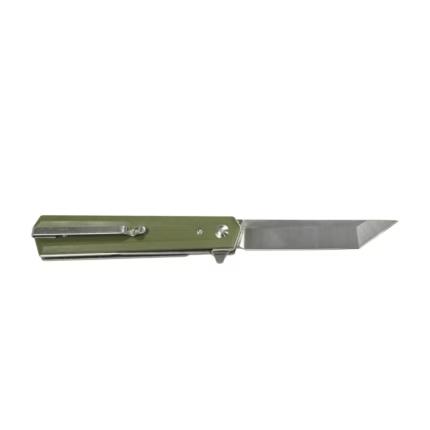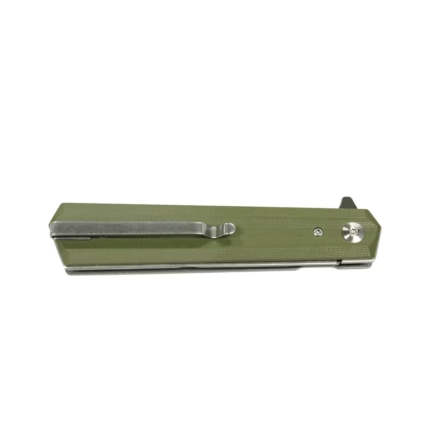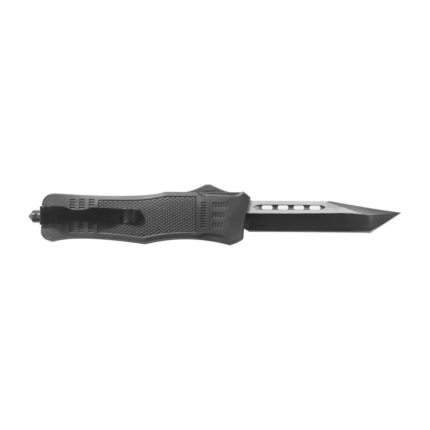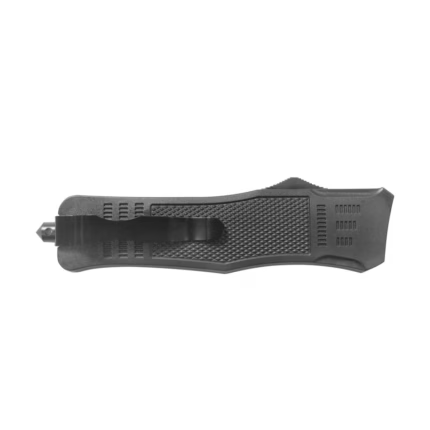Tanto Knife
tanto knife is a blade style originally inspired by traditional Japanese short swords, specifically the tantō used by samurai. Modern tanto knives are known for their distinctive angular tip, typically featuring a straight edge with a sharply angled secondary point. This design creates a robust tip that offers exceptional piercing power and durability, making it ideal for tactical, survival, and self-defense applications.
Unlike curved or drop-point blades, the tanto’s unique geometry provides enhanced strength at the tip, allowing it to penetrate hard materials with less risk of breakage. Many tanto knives also feature a reinforced spine and a flat grind, improving control and cutting efficiency.
Whether crafted for practical utility or combat readiness, a tanto knife combines aggressive styling with functional strength, appealing to knife enthusiasts, collectors, and professionals alike.
1. What is a Tanto knife?
A Tanto knife features a distinctive angular blade design inspired by traditional Japanese swords. The blade typically has a high point with a flat grind, resulting in a robust, piercing tip ideal for tactical use, self-defense, and hard utility tasks.
2. What are the advantages of a Tanto blade?
-
Penetration power: The strong, reinforced tip is excellent for stabbing through tough materials.
-
Durability: The flat grind and robust tip resist breakage better than other blade shapes.
-
Edge retention: Dual edge geometry makes the main cutting edge stay sharp longer.
-
Aesthetic appeal: Its aggressive, angular look is favored in modern tactical and survival knife designs.
3. What are Tanto knives commonly used for?
Tanto knives are popular for:
-
Tactical/military use
-
Self-defense and EDC (Everyday Carry)
-
Rescue or emergency applications
-
Utility tasks such as cutting, prying, and scraping
4. What’s the difference between American Tanto and Japanese Tanto?
-
American Tanto: Features a sharp angular transition between the blade edge and the point, offering reinforced stabbing power and modern tactical styling.
-
Japanese Tanto: Has a more continuous, curved edge and was historically used as a samurai's sidearm. It’s often more elegant, with traditional styling.
5. Is a Tanto knife good for everyday carry (EDC)?
Yes — many Tanto knives are compact, foldable, and practical for EDC. They’re especially valued for their piercing strength and tactical appearance, though their tip geometry can be less ideal for slicing or food prep compared to drop-point or clip-point blades.
6. Can a Tanto knife be used for survival or bushcraft?
While Tanto knives excel at prying and penetration, they’re not ideal for all survival tasks. Their tip design limits slicing efficiency and fine carving. However, their rugged build and toughness make them a solid backup or tactical addition to a survival kit.
7. Are Tanto knives legal to carry?
Knife laws vary by location. In most regions, Tanto knives are legal to own and carry if they meet blade length and folding vs. fixed blade regulations. Always check your local laws before purchasing or carrying a Tanto knife.
8. How do I sharpen a Tanto blade?
Tanto knives require sharpening each edge segment individually:
-
Use a sharpening stone or guided system.
-
Maintain the two separate bevels (main edge and secondary point).
-
Take extra care with the tip to avoid rounding it off.
9. Do Tanto knives come in both folding and fixed blade styles?
Absolutely. Tanto knives are available as:
-
Folding knives: Great for EDC and discreet carry.
-
Fixed blades: Ideal for tactical, heavy-duty, or survival applications.

